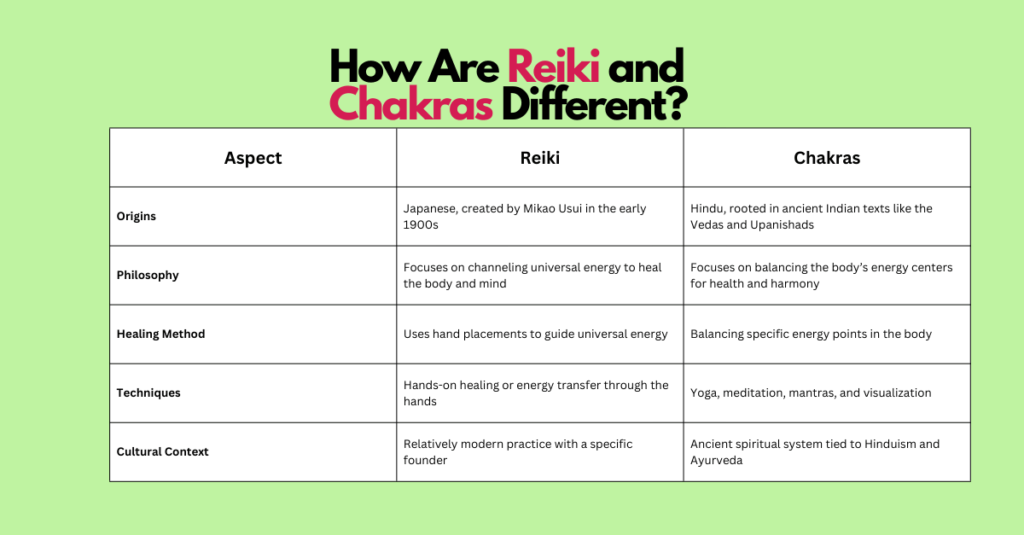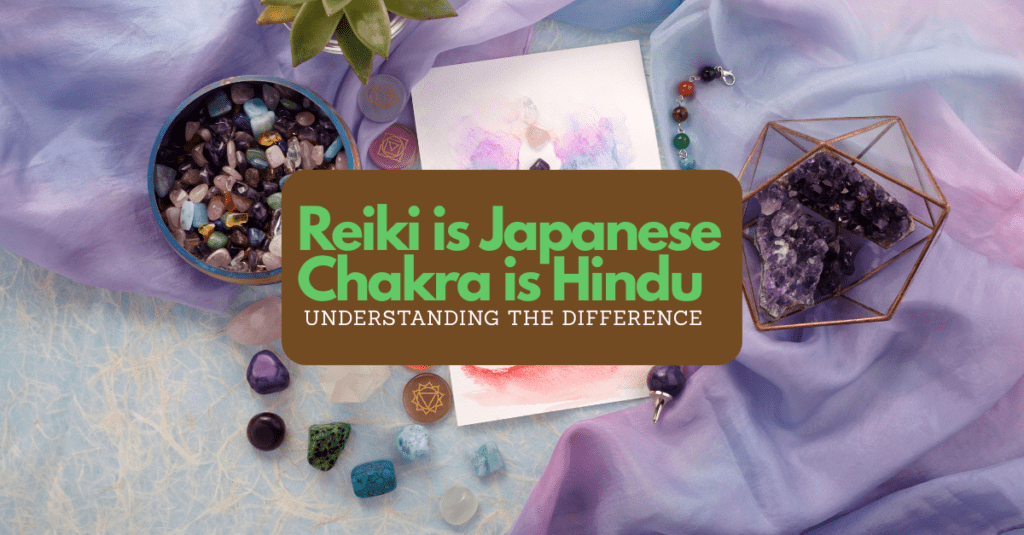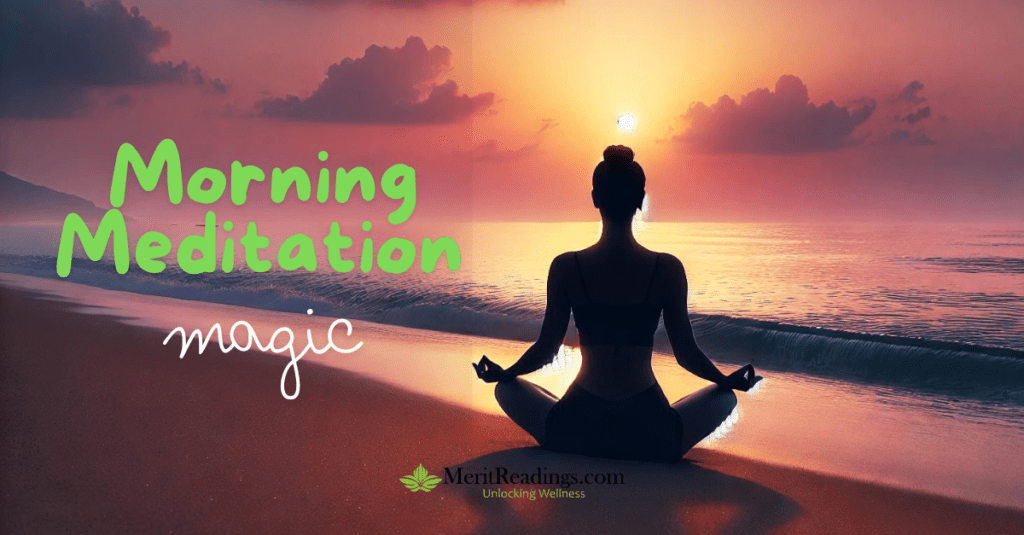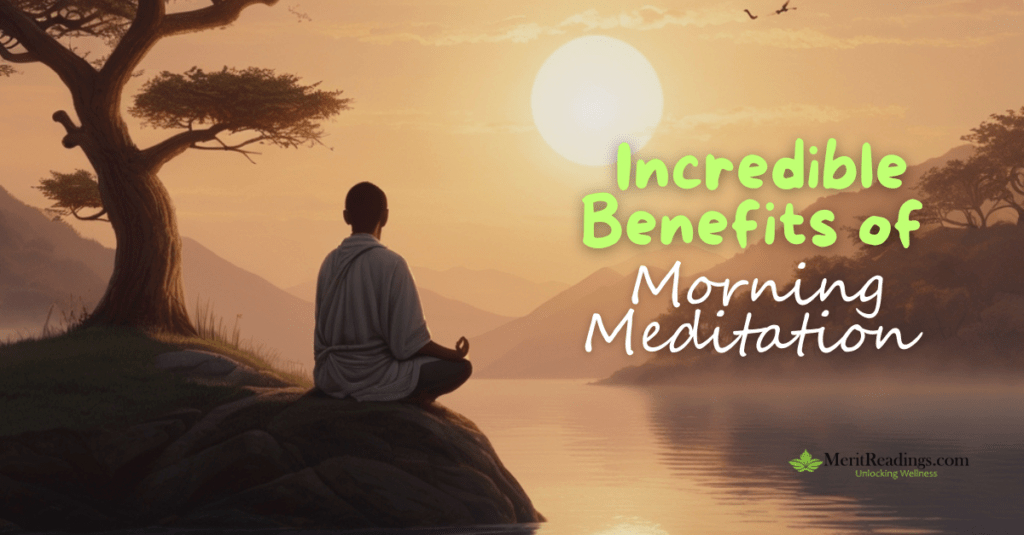If you’re new to the world of energy healing, you might have heard about Reiki and Chakras. Many beginners often wonder, “Reiki is Japanese but Chakra is Hindu—how are they different?” You might also be asking, “What’s the difference between Reiki and Chakras?” or “How do they work?” While both practices aim to promote healing and balance, they have unique origins, methods, and philosophies. Reiki comes from Japan and focuses on channeling universal energy, while Chakras are rooted in Hindu traditions and deal with the body’s energy centers. Understanding these differences can help you appreciate how they work individually and how they can complement each other.
By the end of this article, you’ll have a clear understanding of why Reiki is Japanese but Chakra is Hindu, and how both can support your journey toward wellness.
What is Reiki?

Reiki is a Japanese energy healing technique. The word “Reiki” comes from two Japanese words: “Rei,” which means “universal,” and “Ki,” which means “life energy.” Together, Reiki means “universal life energy.” It was developed in the early 20th century by a Japanese Buddhist named Mikao Usui. Reiki is all about channeling this universal energy to promote healing, balance, and relaxation.
In a Reiki session, a trained practitioner uses their hands to gently guide energy into your body. They might place their hands on or just above specific areas of your body, depending on what you need. The goal is to clear blockages and help your energy flow smoothly. Many people find Reiki to be deeply relaxing and calming. It’s often used to reduce stress, ease pain, and improve overall well-being.
Here are some key points about Reiki:
- Origin: Japan, developed by Mikao Usui.
- Focus: Channeling universal life force energy.
- Practice: Hands-on or hands-off healing.
- Purpose: Promoting relaxation, reducing stress, and supporting the body’s natural healing abilities.
- Reiki Meditation: Reiki practitioners often use meditation as an important part of their practice. Reiki meditation helps the practitioner stay calm and open, so they can easily pass the Reiki energy to others. People who receive Reiki also use meditation to relax and let the Reiki energy work smoothly in their body. It helps them feel peaceful and allows the energy to blend naturally with their own energy.
What are Chakras?

Chakras, on the other hand, come from Hindu traditions. The word “Chakra” means “wheel” or “disk” in Sanskrit, an ancient Indian language. In Hinduism, Chakras are believed to be spinning wheels of energy located along your spine. There are seven main Chakras, each connected to different parts of your body and emotions. For example, the Heart Chakra is linked to love and compassion, while the Root Chakra is tied to feelings of safety and stability.
The idea behind Chakras is that when they are balanced and open, your energy flows freely, and you feel healthy and happy. But if a Chakra is blocked or out of balance, it can lead to physical or emotional problems. To balance your Chakras, you might practice yoga, meditation, or use specific mantras (sounds or phrases) and visualizations.
Key aspects of the Chakra system include:
- Origin: Ancient Hindu texts, such as the Vedas and Upanishads.
- Focus: Energy centers within the body.
- Practice: Balancing and aligning these energy centers.
- Purpose: Promoting physical, emotional, and spiritual well-being.
- Seven Main Chakras: The most commonly recognized system consists of seven main Chakras, located along the spine.
How Are Reiki and Chakras Different?

Now that you know the basics, let’s look at the key differences between Reiki and Chakras:
Origins:
- Reiki is Japanese, created by Mikao Usui in the early 1900s.
- Chakras are Hindu, with roots in ancient Indian texts like the Vedas and Upanishads.
Philosophy:
- Reiki focuses on channeling universal energy to heal the body and mind.
- Chakras focus on balancing the body’s energy centers to maintain physical, emotional, and spiritual health.
Healing Method:
- Reiki uses hand placements to guide universal energy.
- Chakra healing focuses on balancing specific energy points.
- Reiki involves hands-on healing or energy transfer through the hands.
- Chakra work involves yoga, meditation, mantras, and visualization to balance energy.
Cultural Context:
- Reiki is a relatively modern practice with a specific founder.
- Chakras are part of a much older spiritual system tied to Hinduism and Ayurveda.
How Are Reiki and Chakras Similar?
Even though Reiki and Chakras come from different cultures, they share some similarities:
1. Energy Healing: Both practices focus on energy. Reiki works with universal life energy, while Chakras deal with the body’s internal energy system.
2. Holistic Approach: Both Reiki and Chakras aim to heal the whole person—body, mind, and spirit.
3. Relaxation and Balance: Both can help reduce stress, promote relaxation, and bring a sense of balance and peace.
Can You Combine Reiki and Chakras?

Even though Reiki and chakras come from different traditions, they can be used together. Some Reiki practitioners focus on chakras when doing Reiki meditation. During a Reiki session, energy may naturally flow to a blocked chakra and help clear it. Many Reiki practitioners study the chakra system to better understand their clients’ energy flow. While they are distinct, some Reiki practitioners incorporate chakra work into their sessions. This is because a balanced energy system can enhance the flow of Reiki energy. However, it is important to remember that this is an addition to traditional Reiki, and not an original part of it.
Here’s how it might work:
- The practitioner starts by scanning your Chakras to see which ones are blocked.
- They then use Reiki hand positions to send healing energy to those areas.
- You might also be guided through a meditation to visualize your Chakras opening and balancing.
Combining these practices can create a greater feeling of balance, peace and well-being.
Common Misconceptions About Reiki and Chakras
- Reiki and Chakras are the same thing: While both involve energy healing, they come from different traditions and have different methods.
- You need to be spiritual to practice them: You don’t need to follow any specific religion or belief system to benefit from Reiki or Chakra work.
- They are just non-traditional practices: Both Reiki and Chakras have been studied for their potential benefits, especially in reducing stress and improving quality of life.
How to Get Started with Reiki and Chakras
If you’re interested in trying Reiki or Chakra work, here are some simple steps to get started:
- Learn the Basics: Read books or watch videos about Reiki and Chakras to understand how they work.
- Try a Reiki Session: Find a certified Reiki practitioner in your area or try a distance Reiki session.
- Practice Chakra Meditation: Start with a simple meditation to balance your Chakras. Focus on each Chakra, one by one, and visualize it glowing brightly.
- Combine Both: If you’re comfortable, try combining Reiki and Chakra work during your meditation or healing sessions.
How Reiki Meditation Helps with Chakras
Reiki meditation is a powerful way to calm the mind and balance energy. Here’s how it works:
- Find a Quiet Space – Sit or lie down in a peaceful place.
- Breathe Deeply – Take slow, deep breaths to relax.
- Use Reiki Symbols (if attuned) – If you are trained in Reiki, you can visualize symbols to enhance energy flow.
- Focus on Chakras – You can place your hands on each chakra area while setting the intention for healing.
- Allow Energy to Flow – Let Reiki energy work where it is needed most.
Conclusion
Understanding the difference between Reiki and Chakras can help you choose the right practice for your needs. Reiki is Japanese, a hands-on energy healing technique, while Chakras are Hindu, representing the body’s energy centers. Both are powerful tools for promoting balance, relaxation, and well-being.
In simple terms, imagine Reiki as a way to charge a battery (your energy system), and Chakras as the different compartments within that battery. Reiki helps the energy flow, and Chakra work ensures each compartment is functioning at its best.
Whether you try Reiki meditation, Chakra balancing, or a combination of both, the goal is the same—to bring balance and peace to the body and mind. You’re taking a step toward a healthier, more peaceful life. Remember, the journey of energy healing is personal. Take your time, explore what feels right for you, and enjoy the process of discovering your inner energy!



